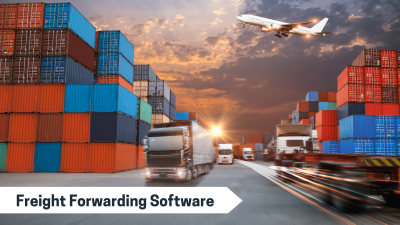Every day, we use email, upload pictures, and videos to the internet, and browse the content of other users. It appears to be difficult to live without these services. These characteristics are inherent in cloud logistics technologies. To address significant issues in the B2B sector.
A transportation management system is a piece of software. That aids businesses in managing logistics. Moving physical objects by land, air, sea, or a combination of these modes of transportation is a part of it. TMS logistics software is a component of the larger supply chain management system.
Software as a service allows for the delivery of applications through the Internet. You can avoid the complexity of managing hardware and software. By accessing it via the Internet rather than installing and maintaining it.
Why do you need automation of transportation logistics at the enterprise?
Implementing a software and hardware complex. It allows a freight transportation company to be competitive and offer top-notch services. Thanks to the automation of transport logistics. Any automation calls for the installation of transport management software (TMS).
This system’s tasks include ensuring efficient route planning for vehicle movement. Distributing loads among all transport units in the most efficient way possible. Performing a plan-fact analysis of the company’s freight traffic, and more. By using Logistics software, you may track the freight delivery procedure round-the-clock.
Transportation management system uses in logistics.
- Tracking down a carrier for a fresh load
A freight management company first looks for a carrier. when a client requests that things move.
- Agreements and a package of insurance signed with a carrier.
A freight broker must execute contracts. An insurance package with a carrier after locating one.
- Tracking freight shipments and informing customers
A carrier picks up the freight at the designated pick-up site. And transports it to the designated destination.
- Paying for out-of-pocket expenses
A broker sets up a speedy and practical money transfer to pay the driver’s travel expenditure.
- Creating a client invoice and a carrier bill payment
For the delivery of the cargo, a freight broker creates an invoice. For the client and a carrier’s bill payment.
- Making backup paperwork and submitting it again.
A freight management company obtains all the supporting documentation. From a carrier and sends it to the customer.
- Examining profitability and performance
Owners of the freight management company review data on the carrier. And customer profitability as well as broker performance.
Several forms of transportation management software
Transport management software can comprise modules like a supply chain management system (SCM). An enterprise resource planning (ERP) system, a warehouse management system (WMS), and others. Both installation-based and cloud-based TMS can categorize into two groups.
The acquisition (lease) of server hardware. The acquisition of a license, and the incorporation of the TMS. The corporate workflows are prerequisites for TMS installation solutions. Cloud computing SaaS Software solutions provide the right to use them every month. By presuming that all work in the company’s cloud is over.
Implementing cloud-based transportation management solutions has certain challenges.
Organizations can access a wealth of valuable information. Through the use of logistics software in SaaS development. It is throughout all modes of transportation to produce. business insight and boost operational and financial efficiency. It appears that many businesses are aware of this.
Even though many businesses may not even have the capability to give such data. 75% of respondents would rate carrier performance reports. It is “critical” or “very important” to their organization. Yet, this is no longer a valid worry. The implementation and support processes. Were aided by the transport logistics management systems.
Automation in the transportation sector is available with mistrust.
The accessibility of cloud technology is their most significant feature. Companies in the US and the EU are already “sitting in the clouds” in many numbers. And predictions state that by 2030, over 45% of businesses globally will be utilizing them.
One shouldn’t, but, think that the road to growth is straightforward. We recently surveyed Polish businesses. The findings showed that roughly 40% of business owners are reluctant. To use SaaS Software technologies in their operations.
Two SaaS logistics software alternatives for the cloud
The options available right now include cloud solutions or stationery (client-server architecture) solutions. The latter’s availability is without a doubt a benefit. Production planning (APS) or production management (MES) in a stationary version. Territory management (YMS), transport management software (TMS), and warehouse automation (WMS), Logistics software.
It will be more expensive because they will first need client-side hardware. for setting up and taking care of a database server.
Conclusion:
We may conclude that cloud logistics automation helps everyone in the supply chain. And makes it simple to resolve complex issues, and it will continue to gain in popularity over time. We address many standardized and unique needs of the transportation sector. as a partner in the development of logistics software.
Our devoted development team accumulated knowledge and experience. After spending many years in the logistics industry.
For more details book a demo with BoxOn Logistics. https://www.boxonlogistics.com/request-demo/






COMMENTS